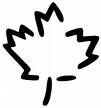All across Canada broadcasters have been moving their AM signals over to the FM band. The Canadian Radio Television C ommission will authorize only so many stations in each market – to assure that each station has the economic potential for success, and each station has to promise to meet a specific programming need. In many Canadian markets there are several FM channels available.
many stations in each market – to assure that each station has the economic potential for success, and each station has to promise to meet a specific programming need. In many Canadian markets there are several FM channels available.
Most of Canada’s population is clustered on the border with the US. The FM channels are generally not limited to the north by other stations, so…
The National Radio Systems Committee has released a study on the effects of reducing the bandwidth of AM transmissions from the present standard of 10 kHz. The study used representative receivers to present transmissions of speech, sports, music and commercials with bandwidths of 5 kHz, 7 kHz and 10 kHz. The study assumes that both the desired and undesired stations operate using the same standard.
The results showed that mutually reducing transmission bandwidth down to 5 kHz is a big plus for speech. There was either a benefit, or no change from the…
Representatives of most major radio broadcasting groups and the most active AM directional engineering consultants have been working on a proposal to the FCC to finalize a broad revision of the rules that specify how AM stations verify that their directional antennas are working properly.
A recent Radio World Online report details the group’s effort to come to a consensus on the new procedures. The general thrust of the process focuses on how Method of Moments modeling provides a better picture of the actual performance of an antenna system than the…
Radio Ink reported today that WHAT(AM) Philadelphia is the first AM to broadcast Alternative Rock in Medium Wave HD radio.
I’m listening now to Snow Patrol on the station, but not in HD. Hopefully they will have it on later today.
This will be an interesting experiment – I just wish that WHAT had a better signal to really test whether mainstream (kind of) music can build an adequate audience on HD.
Good luck “Skin Radio”!
A recent article about the rollout of HD Radio in FMQB by Paul Marszalek points out some of the good things, and some big pitfalls that may be ahead for terrestrial radio in the USA.
Although IBOC radio was not the best choice for terrestrial broadcasters, with its exclusive focus on retaining the entitlement of incumbent broadcasters to the exclusion of all other considerations. Unfortunately, that choice required squeezing of ten pounds of s**It into a five pound bag.
We can look back as much as we want, but we are where we are. There was no concept of how…
Late at night, the voice of Sandy Beach at WKBW or Wolfman Jack at XERB would cover the country. You could listen for thousands of miles. It is harder now, but you can still hear radio from across the nation or across the ocean. It takes more skill now that the band is more crowded, but the National Radio Club is ready to help. Check them out!
There are many towers that are 200 ft tall or less that have lights. If your tower is less than 200 feet above ground, check the program on the FCC website called Towair to see if the tower requires notification to the FAA under today’s standards. If not, you can ask to delete the lighting and marking requirements (more…)
The National Association of Broadcasters proposed to the FCC that AM stations be permitted to operate FM translators within the AM 2.0 mV÷m daytime contour or 25 miles of the AM station’s transmitter site. The full text of the document is available here.
I just installed the brand new JVC KD-HDR1 car radio with HD Radio. This is by far the lowest cost HD radio on the market. ($279 after rebate from Crutchfield) It has a lot of features, including multichannel capability, and auxiliary inputs (with adapters) for CD changers, Ipods, XM and Delphi radio.
I give it a 7 out of 10, unfortunately it is the AM section that lowers the rating.
It has a builtin CD/CDR/MP3/WMA player with title text readout too. (more…)
A recent article from the
Detroit Free Press discusses the issues facing Radio Broadcasters from other media, and from the point of view of new opportunities.
 many stations in each market – to assure that each station has the economic potential for success, and each station has to promise to meet a specific programming need. In many Canadian markets there are several FM channels available.
many stations in each market – to assure that each station has the economic potential for success, and each station has to promise to meet a specific programming need. In many Canadian markets there are several FM channels available.